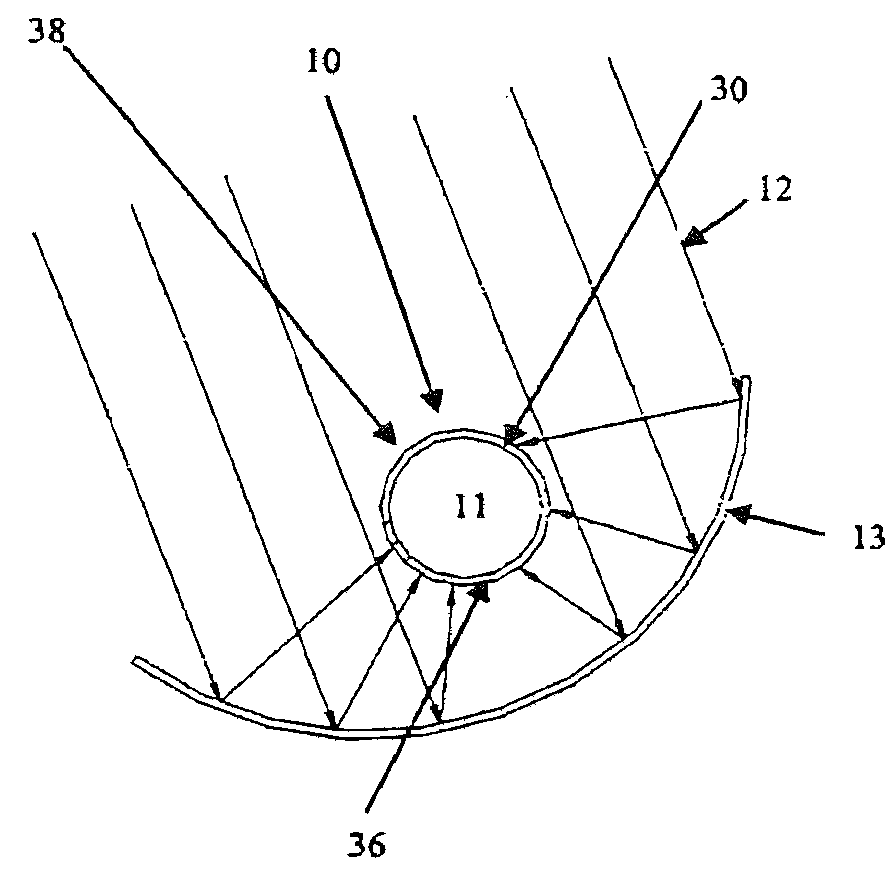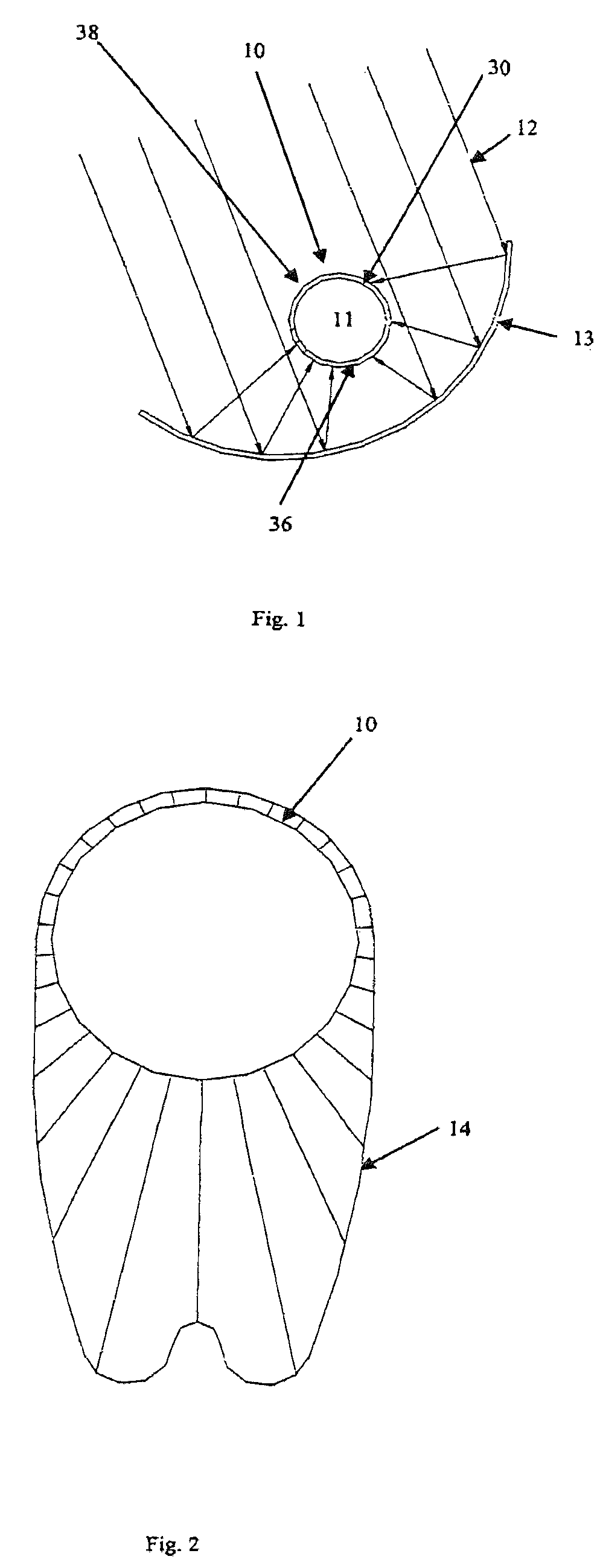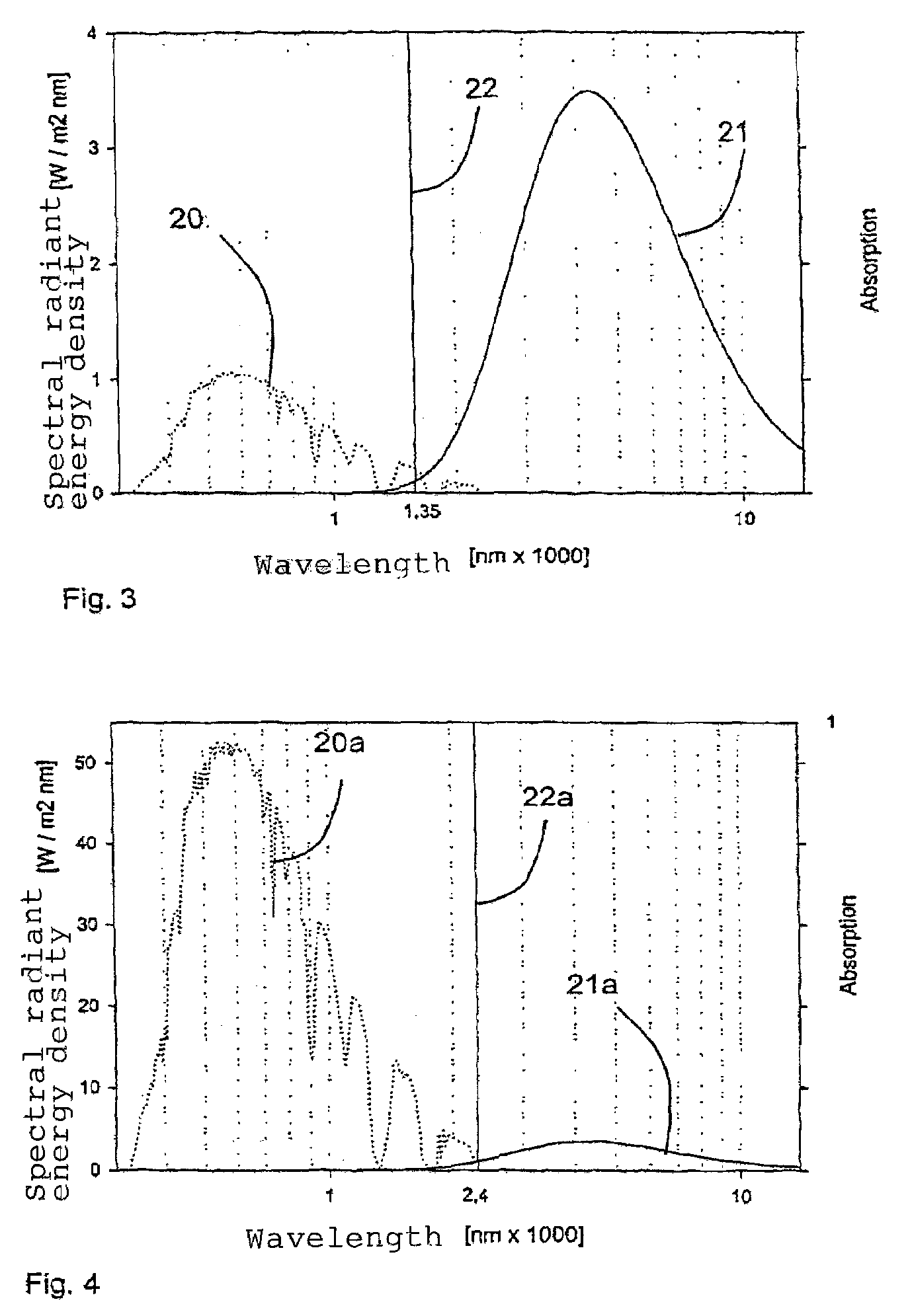Solar absorber
a solar absorber and solar energy technology, applied in solar ray transmission, solar energy devices, furniture, etc., can solve the problems of thermal loss and absorber failure, and achieve the effect of increasing the yield of captured heat and reducing reradiation loss
- Summary
- Abstract
- Description
- Claims
- Application Information
AI Technical Summary
Benefits of technology
Problems solved by technology
Method used
Image
Examples
Embodiment Construction
[0050]FIG. 1 shows the absorber body 10, which in this instance is an elongated absorber tube 30 through the interior 11 of which a heat transfer medium flows. A concentrator 13 in the form of a parabolic mirror concentrates and focuses the incident solar radiation 12 onto the absorber body 10. The absorber body 10 absorbs the solar radiation and converts it into heat, which is transmitted to the heat transfer medium. This heats the heat transfer medium.
[0051]FIG. 2 shows the distribution of radiant energy density 14 over the circumference of the absorber body in polar coordinates. On the side 36 oriented toward the concentrator 13, the radiant energy density is high. On the side 38 oriented away from the concentrator, the radiant energy density is equal to the radiant energy density of the incident solar radiation, which could be expressed as the value “1”.
[0052]FIG. 3 shows the spectral distribution of the radiant energy density of the incident solar radiation by means of the curv...
PUM
| Property | Measurement | Unit |
|---|---|---|
| Fraction | aaaaa | aaaaa |
| Fraction | aaaaa | aaaaa |
| Thickness | aaaaa | aaaaa |
Abstract
Description
Claims
Application Information
 Login to View More
Login to View More - R&D
- Intellectual Property
- Life Sciences
- Materials
- Tech Scout
- Unparalleled Data Quality
- Higher Quality Content
- 60% Fewer Hallucinations
Browse by: Latest US Patents, China's latest patents, Technical Efficacy Thesaurus, Application Domain, Technology Topic, Popular Technical Reports.
© 2025 PatSnap. All rights reserved.Legal|Privacy policy|Modern Slavery Act Transparency Statement|Sitemap|About US| Contact US: help@patsnap.com



